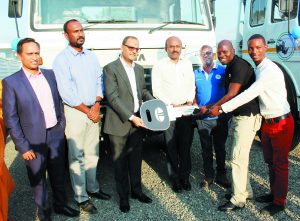
Mining & Trade News
Malawi Online News
Top Stories
Business
Shayona commits to expansion drive
November 22, 2019 / Marcel Chimwala

Shayona Cement Corporation says it is committed to increase cement production to ensure that it employs more Malawians and provide more business opportunities to companies operating in Malawi in order to play a major role in Malawi’s economic growth.
Shayona MD Jitendara Patel said this at Tata Zambia Malawi Branch offices in Lilongwe when his Company received 24 Tata Trucks which it has procured for distribution of cement across the country.
“Shayona is a Malawian company. I, the founder, was born in Mulanje, and my vision is to see the Company growing to make Malawi self-reliant on cement production since importation of cement is a drain on the country’s foreign exchange,” he said.
Patel hailed the long time relationship between his Company and Tata, which he said, will continue to bear more fruits.
He said Shayona expects to procure more trucks from Tata as it continues with its expansion drive, which will see the company building infrastructure for a logistics department at Kanengo Industrial area in Lilongwe.
Head of Aftersales and Administration at Tata Zambia – Malawi Branch Karthik Rajagopolan thanked Shayona for maintaining the business relationship with his Company saying the advantage of buying from Tata, unlike other overseas dealers, is that its local presence makes it easier for a customer to access back up services.































